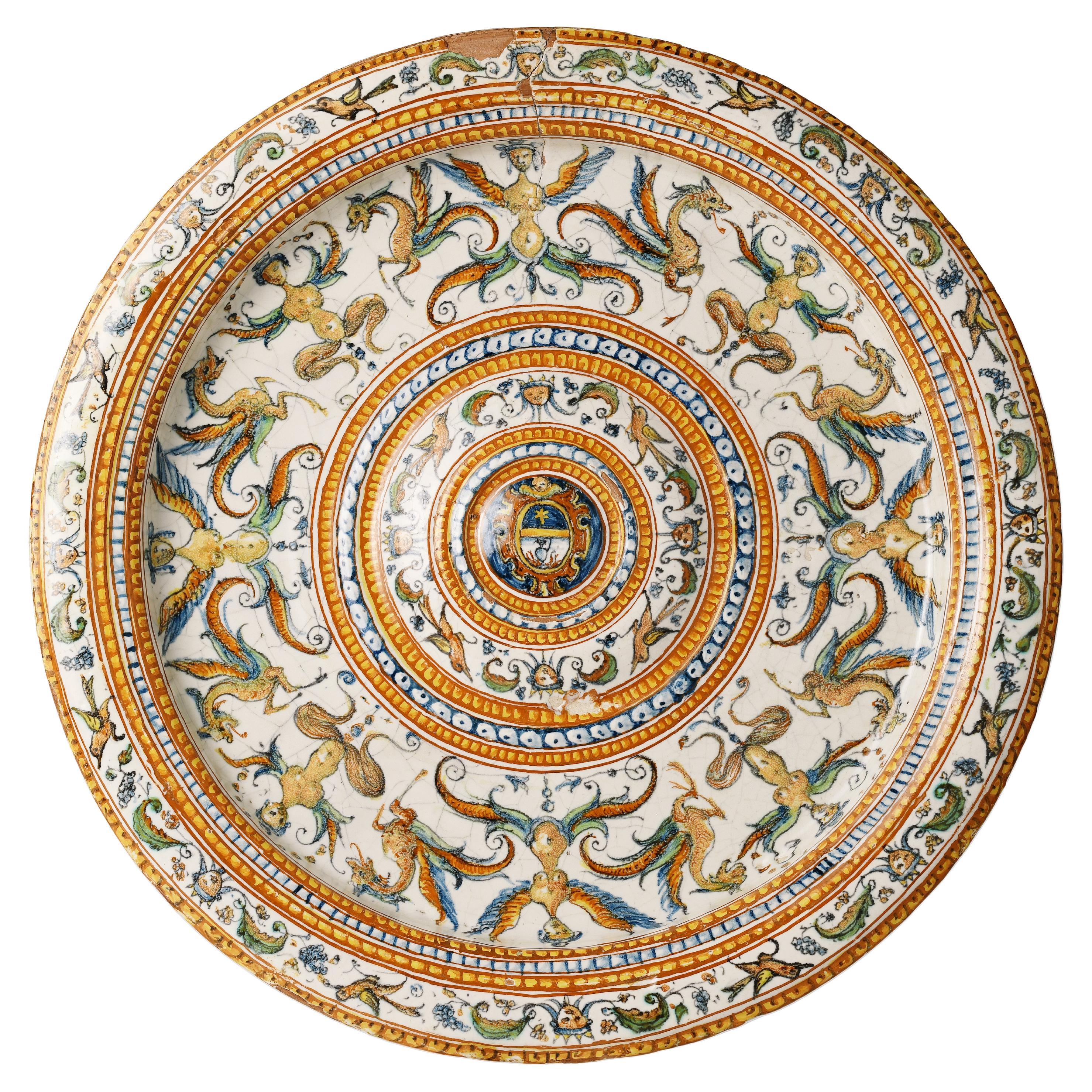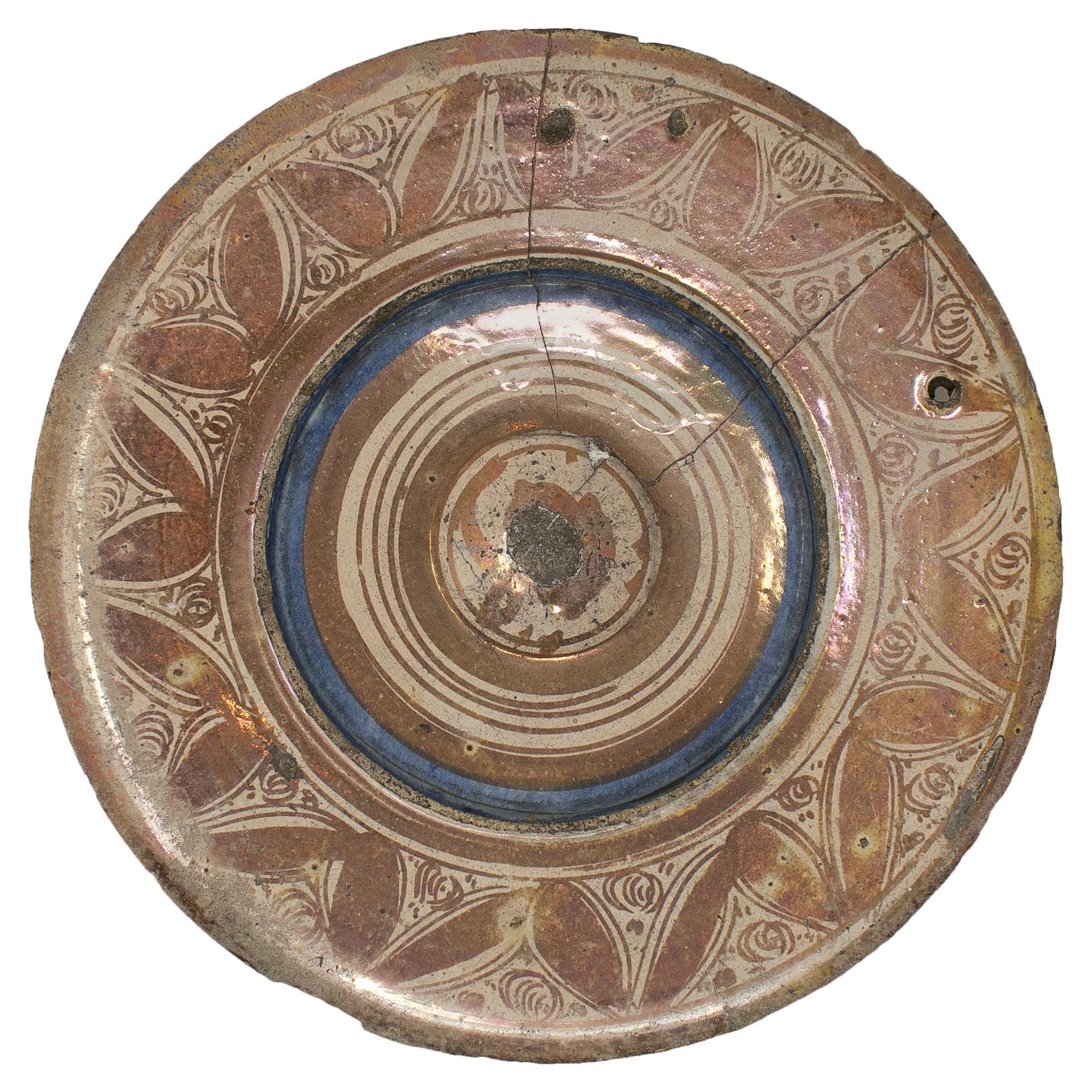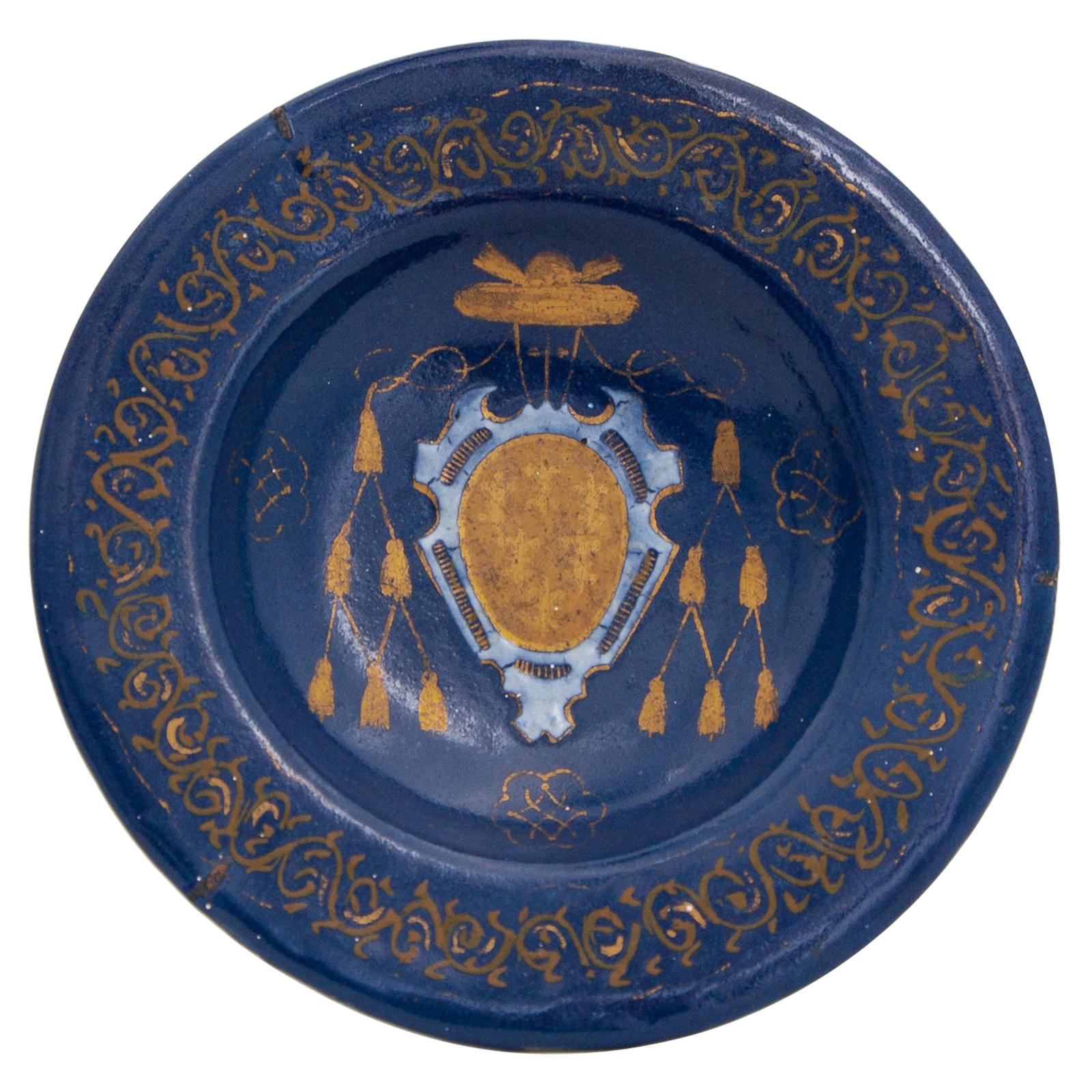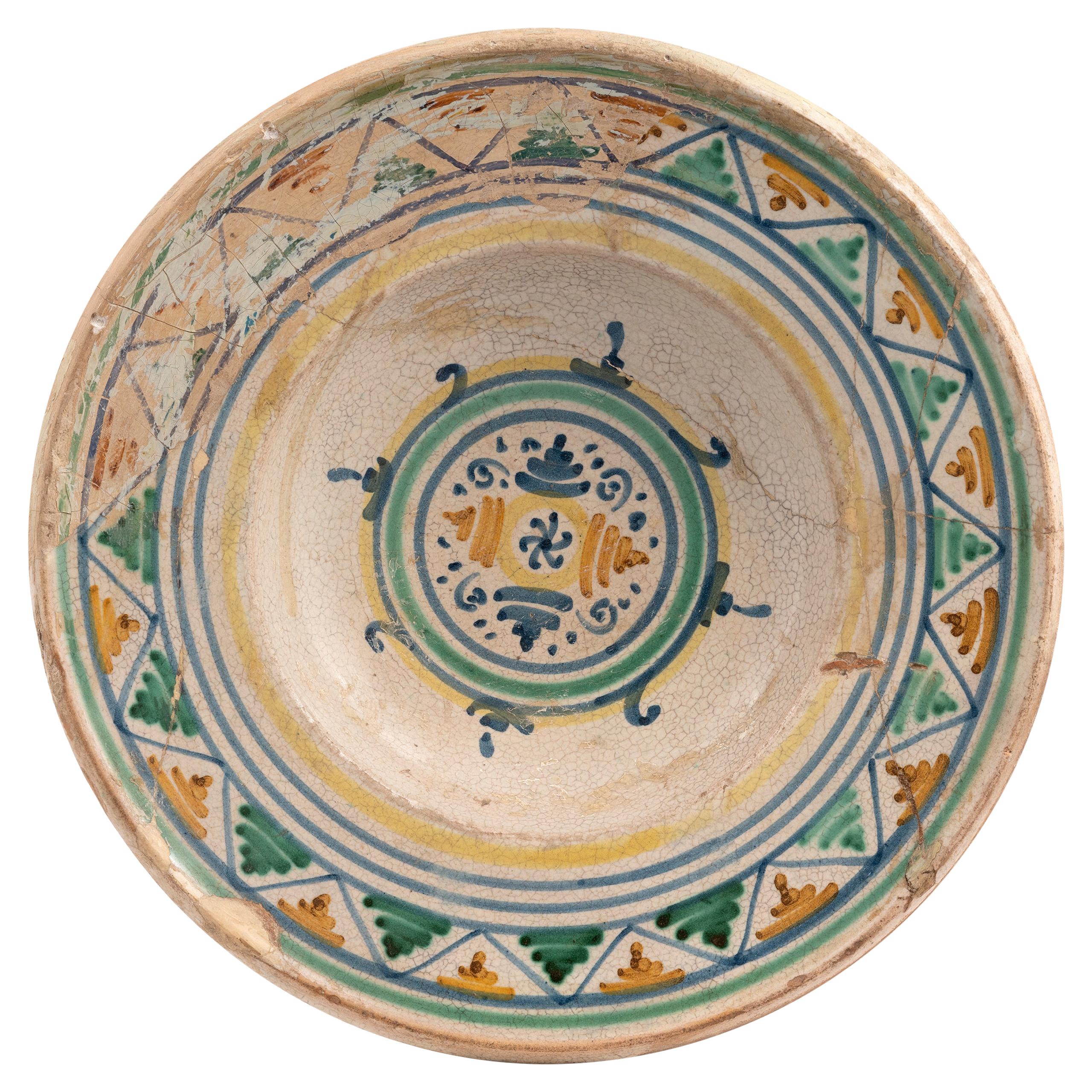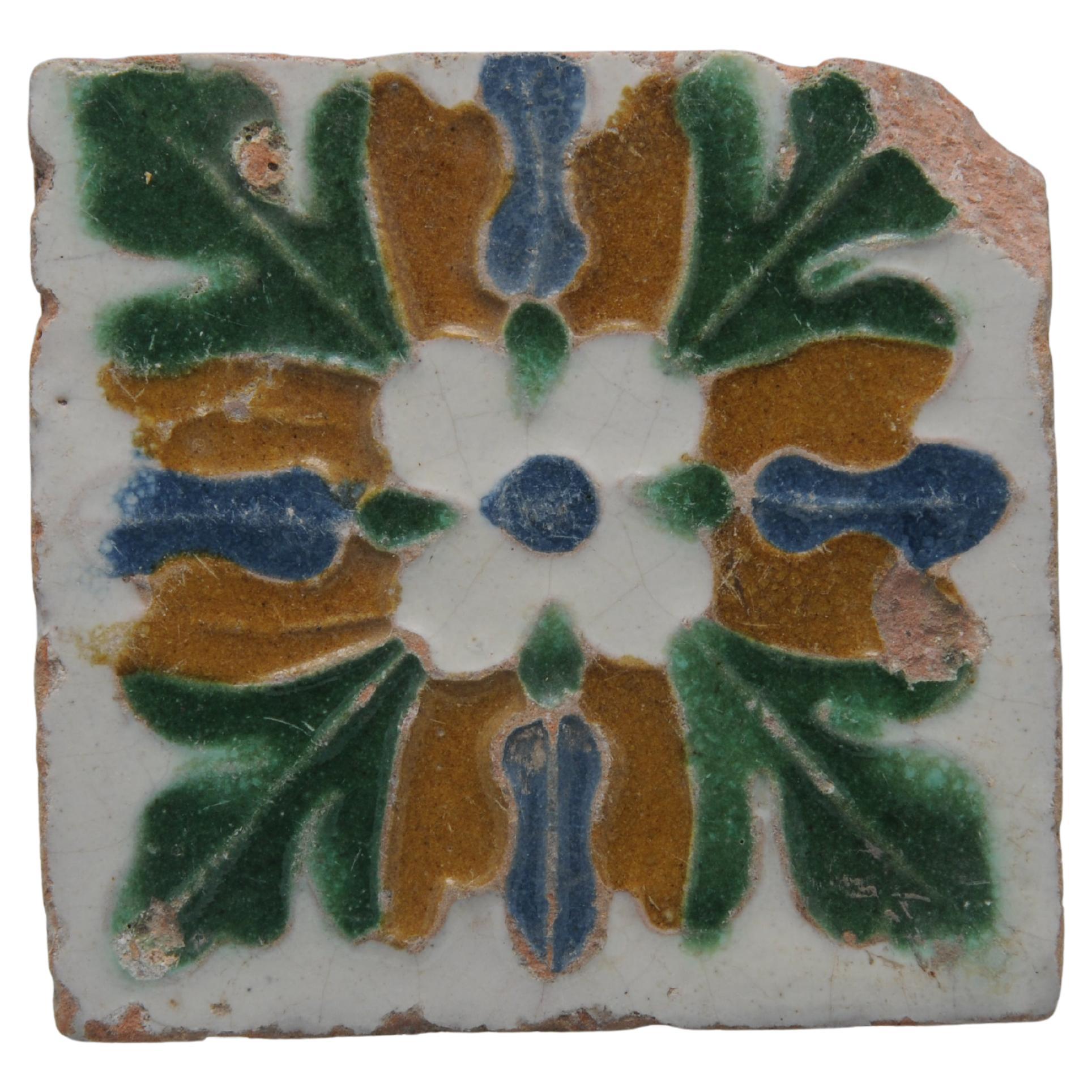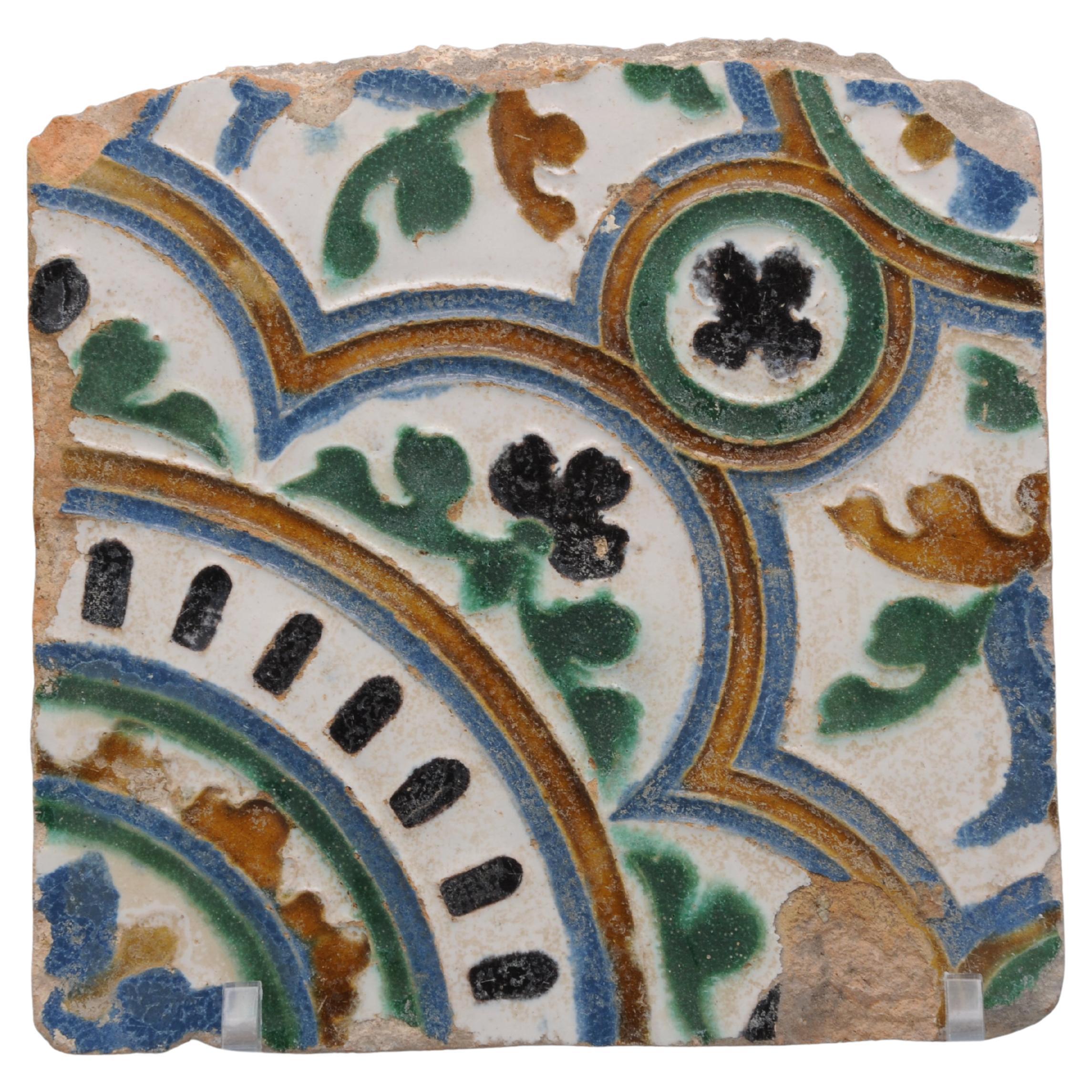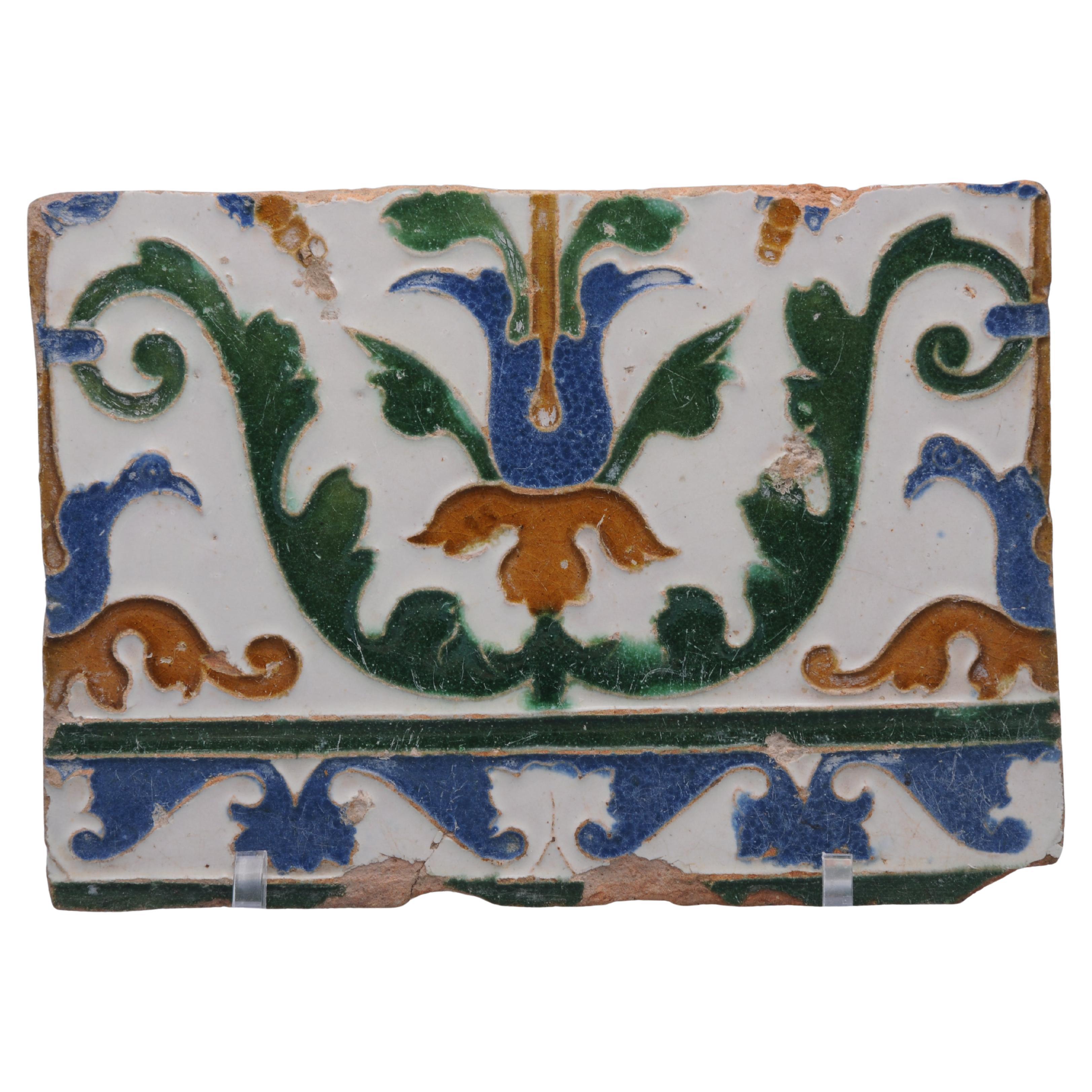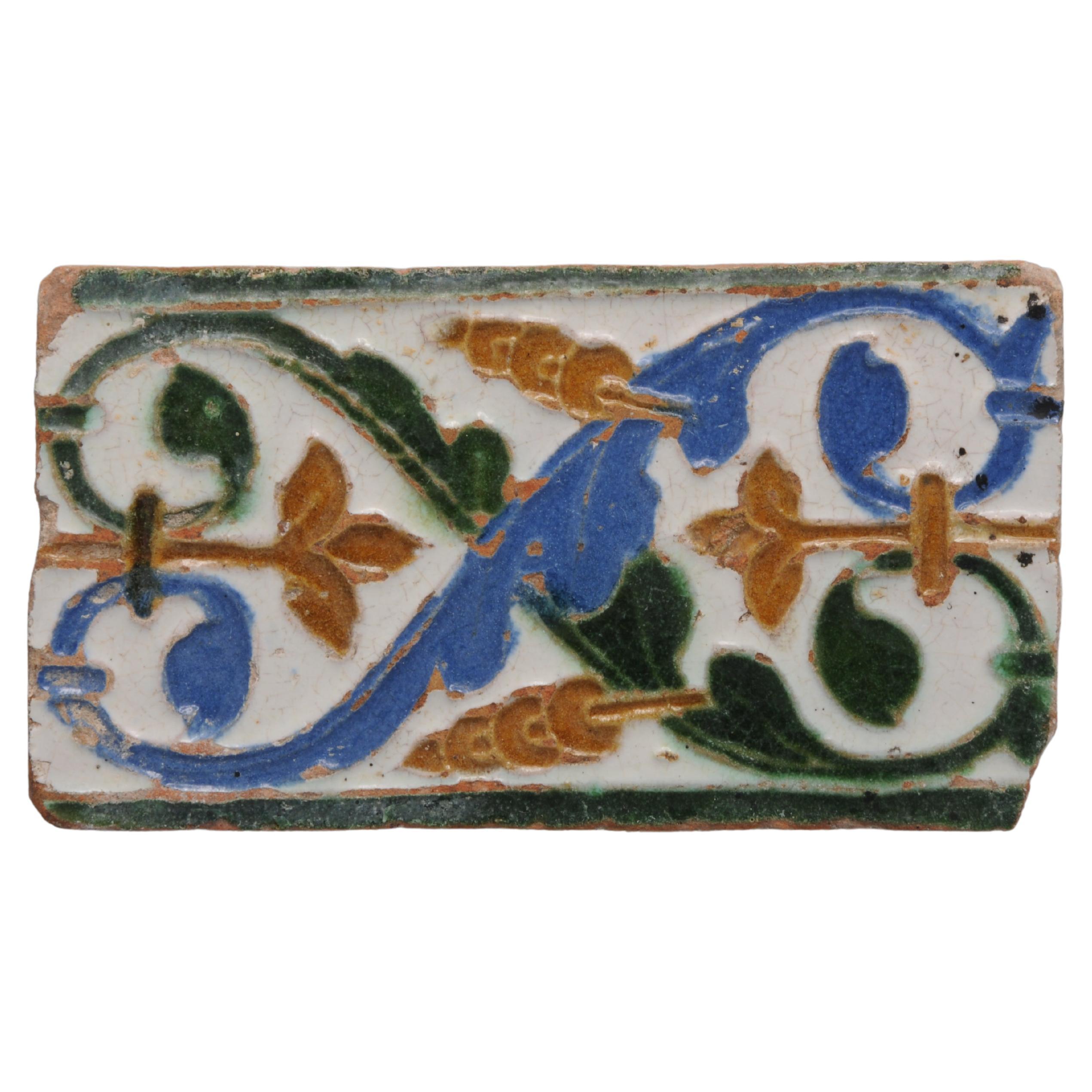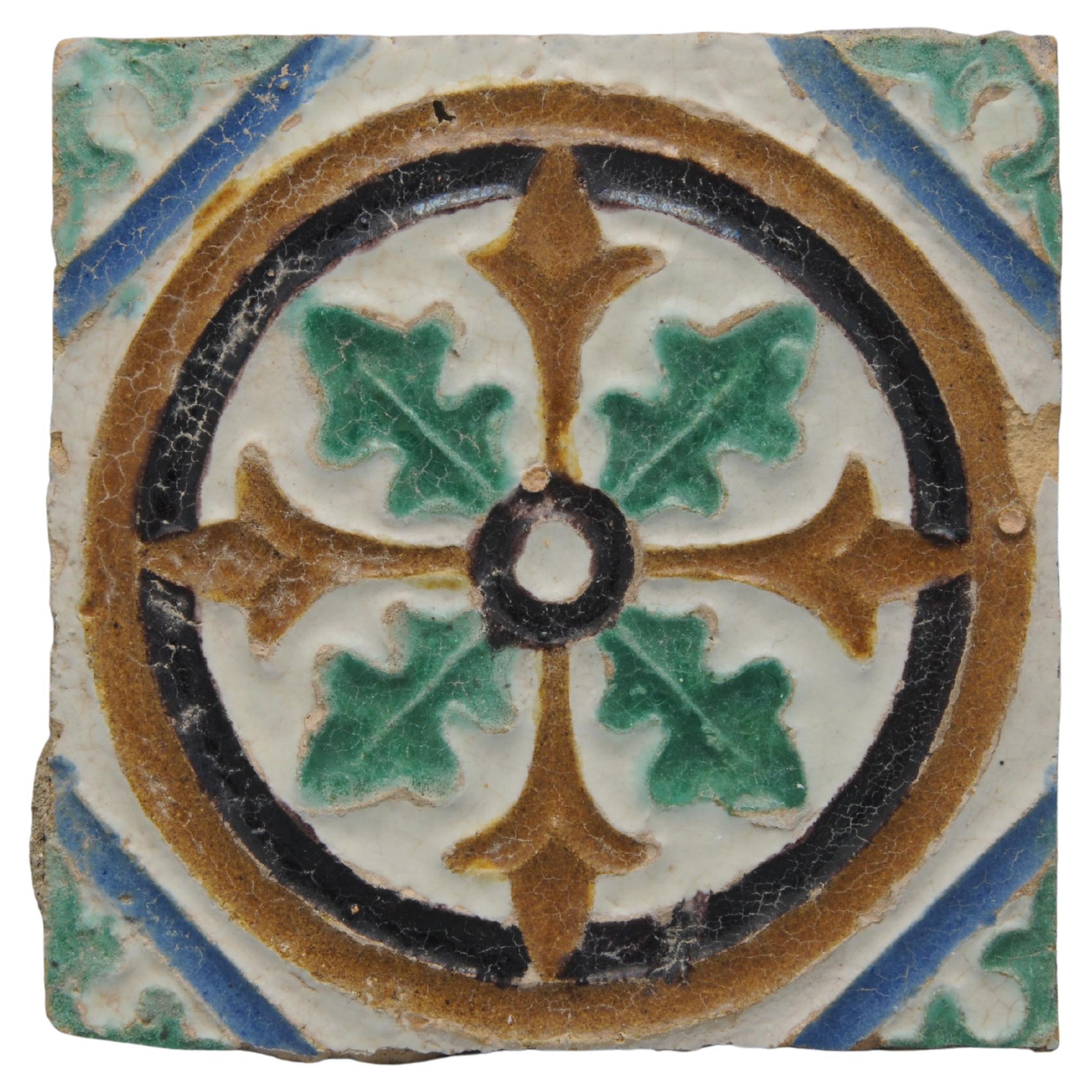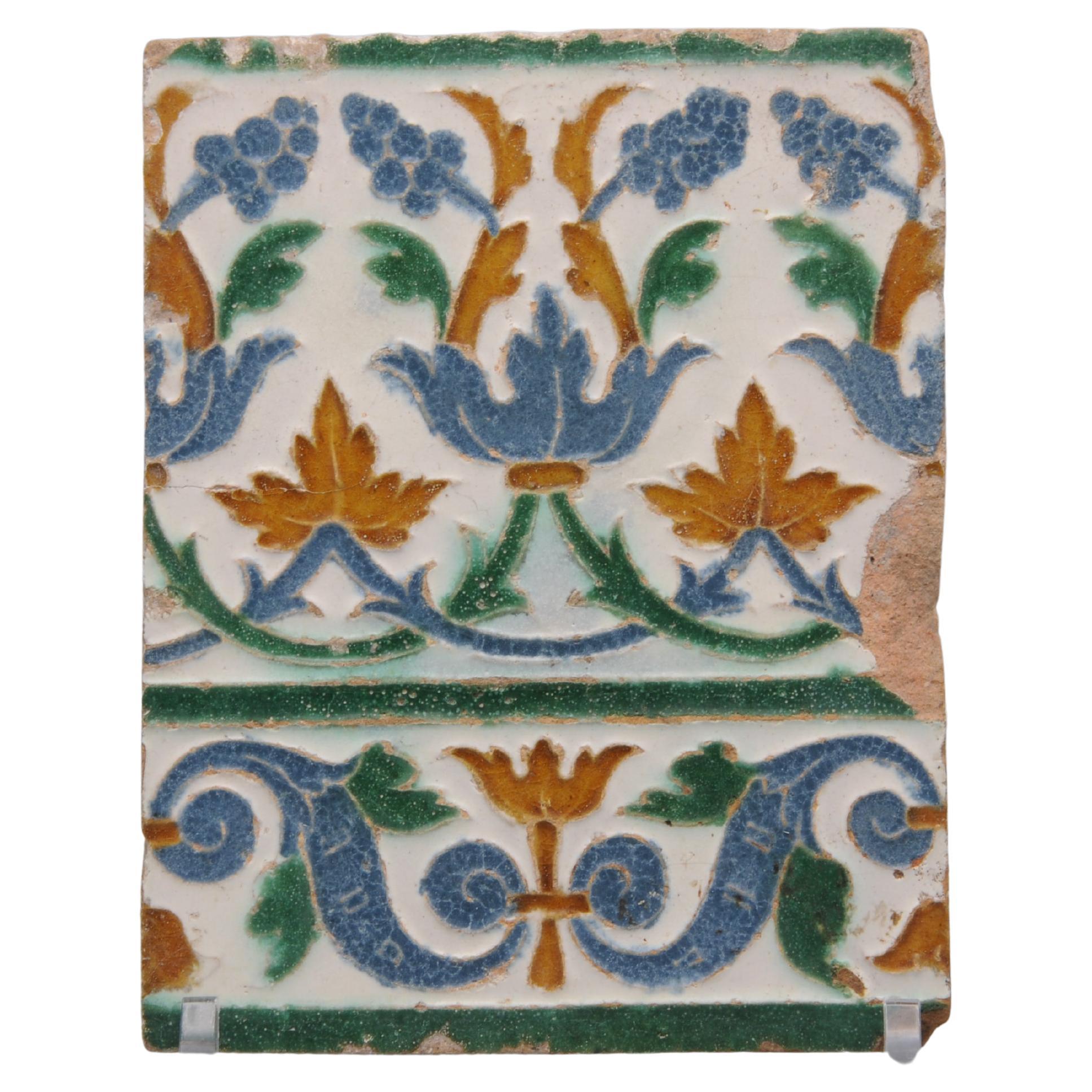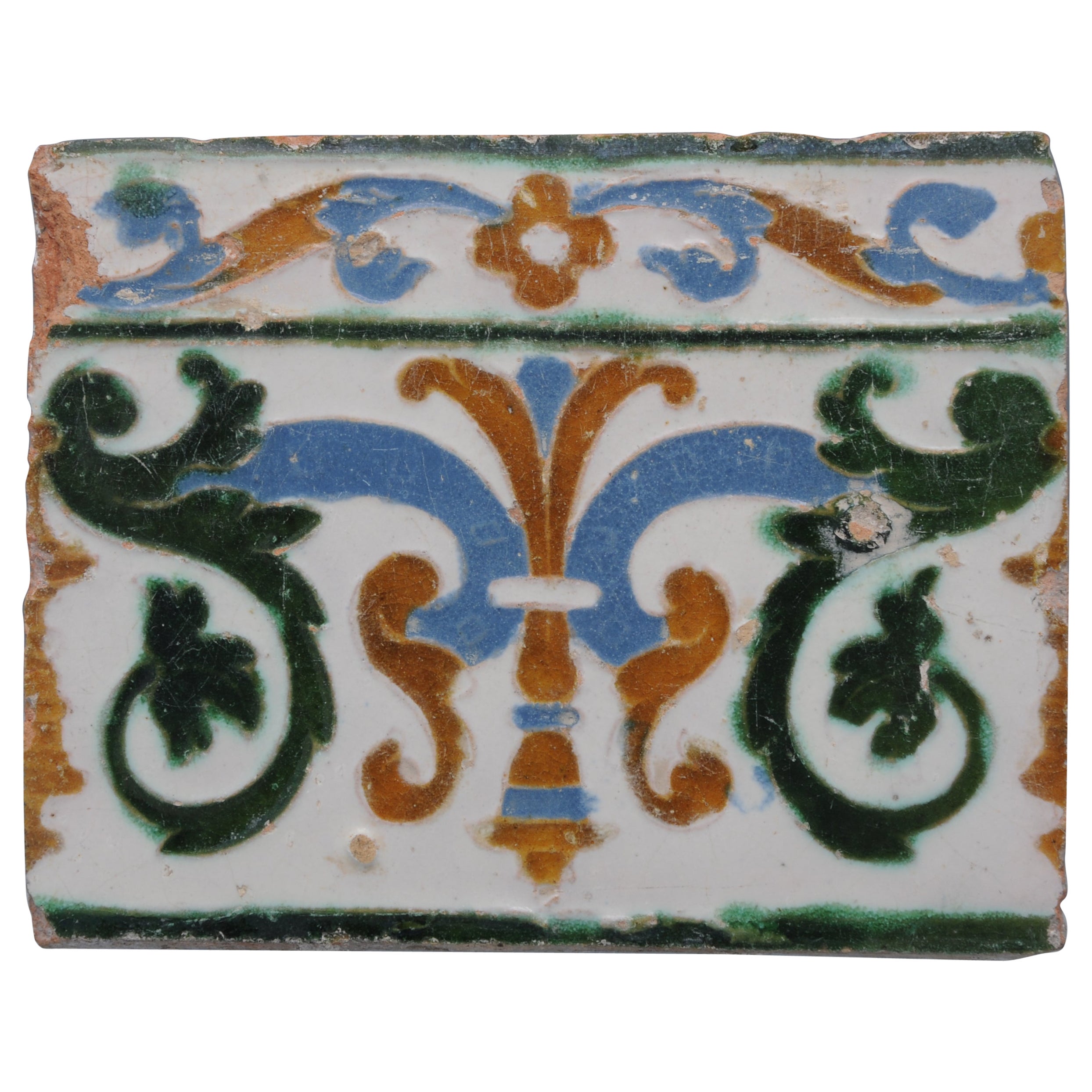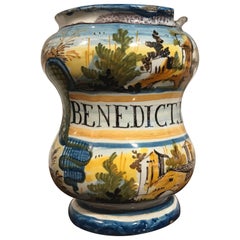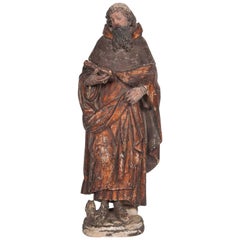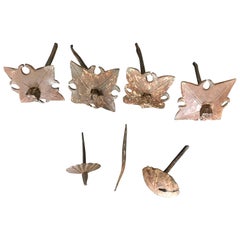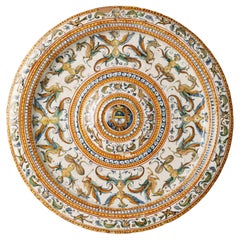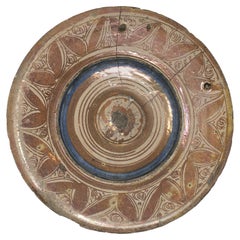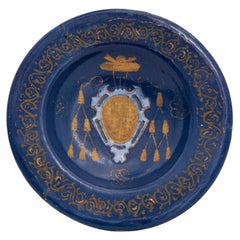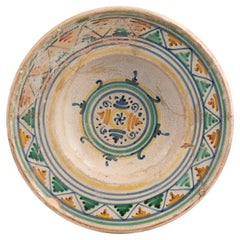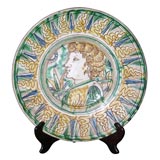
16th century Italian Plate
View Similar Items
Want more images or videos?
Request additional images or videos from the seller
1 of 5
16th century Italian Plate
About the Item
- Dimensions:Diameter: 13.5 in (34.29 cm)
- Materials and Techniques:
- Place of Origin:
- Period:
- Date of Manufacture:16th century
- Condition:
- Seller Location:Stamford, CT
- Reference Number:1stDibs: 0606298030475
About the Seller
5.0
Platinum Seller
Premium sellers with a 4.7+ rating and 24-hour response times
Established in 1990
1stDibs seller since 2004
465 sales on 1stDibs
Authenticity Guarantee
In the unlikely event there’s an issue with an item’s authenticity, contact us within 1 year for a full refund. DetailsMoney-Back Guarantee
If your item is not as described, is damaged in transit, or does not arrive, contact us within 7 days for a full refund. Details24-Hour Cancellation
You have a 24-hour grace period in which to reconsider your purchase, with no questions asked.Vetted Professional Sellers
Our world-class sellers must adhere to strict standards for service and quality, maintaining the integrity of our listings.Price-Match Guarantee
If you find that a seller listed the same item for a lower price elsewhere, we’ll match it.Trusted Global Delivery
Our best-in-class carrier network provides specialized shipping options worldwide, including custom delivery.More From This Seller
View All18th Century Italian Waisted Albarello
Located in Stamford, CT
An Italian Baroque Castelli albarllo, also known as a pharmacy or drug jar. It held 'Benedict Laxat' listed as far back as Aristotle as a medication used in by midwives. Beautifully decorated with buildings in landscapes in the free, almost impressionistic style typical of Castelli Maiolica...
Category
Antique 18th Century Italian Baroque Ceramics
Materials
Ceramic
16th Century Italian Renaissance Carving of a Male Saint
Located in Stamford, CT
16th century Italian carved and polychromed figure of a male saint or prophet with a wonderful presence. Shown holding an open book in his right hand with flames at his feet, mid-16t...
Category
Antique 16th Century Italian Renaissance Religious Items
Materials
Wood
19th Century Glazed Ceramic Bust of a Boy by Cantagalli, Florence, Italy
By Cantagalli
Located in Stamford, CT
Exceedingly charming ceramic 'Busto di Bambino' in the Italian Renaissance style. With the blue and white glaze typical of artist Andrea Della Robbia...
Category
Antique Late 19th Century Italian Renaissance Revival Busts
Materials
Ceramic
16th Century Spanish or Italian Baroque Wrought Iron Nails and Furniture Mounts
Located in Stamford, CT
Group of 16th century (or earlier, possibly Gothic) Spanish or Italian wrought iron furniture mounts. These hand-wrought bosses and nails show incredible workmanship. These would have been used to decorate - and to structurally hold together an early chest or casket. The four geometric bosses beautifully made, eight ounces each without the nail! The nails are works of art in themselves, with their heavy geometric heads.
Also two round bosses with the nail integral to the piece, one a mushroom form, the other like a parasol. And a single hand-wrought double sided nail. Great group of early iron.
Provenance: Frances Pratt, Writer, Artist, Collector. New York City.
Approximate sizes:
4 bosses 4.625 inches square 11.75 cm
Round bosses 3 inches diameter the larger 2.5 the smaller 7.6/ 6.35 cm
4.5 in high 11.4 cm
5 nails...
Category
Antique 16th Century Italian Baroque Architectural Elements
Materials
Iron
16th Century French Carved Walnut Cassone With Gothic Tracery
Located in Stamford, CT
A wonderful early walnut chest, French 16th century, with a central panel of Gothic tracery. The only other decoration are simple raised molding square diamonds one the front and sid...
Category
Antique 16th Century Blanket Chests
Materials
Walnut
19th Century English Staffordshire Scottish Hunter on Horseback
Located in Stamford, CT
Beautifully painted and impressive scale Staffordshire group of a hunter riding back from the hunt with his quarry, a stag draped over the horse. The overall white glaze, except for ...
Category
Antique Mid-19th Century English Victorian Ceramics
Materials
Ceramic
You May Also Like
Italian Renaissance Plate, Patanazzi Workshop Urbino, End of 16th Century
By Patanazzi Workshop
Located in Milano, IT
Acquareccia plate
Patanazzi workshop
Urbino, last quarter of the 16th century
It measures diameter 17.12 in; foot diameter 11.53 in; height 1.88 in (43.5 cm; 29.3 cm; 4.8 cm).
Weight
State of conservation: wear and a few small minimal detachments of enamel, chipping on the raised areas, peeling of enamel at the brim on the back.
This large, shallow basin is equipped with a wide and convex well. It is umbonate with a contoured center. The brim, short and flat, is enclosed in a double rounded and barely raised edge. The basin has a flat base without rims; it has a slightly concave center in correspondence to the well.
The shape takes inspiration from the basins associated with the metal forged amphora pourers that traditionally adorned the credenza. These were used from the Middle Ages to wash hands during banquets. Two or three people washed their hands in the same basin and it was considered an honor to wash one’s hands with an illustrious person.
The decoration is arranged in concentric bands with, in the center of the umbo, an unidentified shield on a blue background: an oval banded in gold with a blue head, a gold star and a field with a burning pitcher.
Rings of faux pods separate the center from a series of grotesque motifs of small birds and masks. These go around the basin and are, in fact, faithfully repeated on the brim. The main decoration develops inside the flounce of the basin, which sees alternating symmetrical figures of winged harpies and chimeras. The ornamentation, outlined in orange, green and blue, stands out against the white enamel background.
This decorative style, defined since the Renaissance as “grottesche” or “raffaellesche”, refers to the decorations introduced after the discovery of the paintings of the Domus Aurea towards the end of the fifteenth century. The discovery of Nero's palace, buried inside Colle Oppio by damnatio memoriae, occurred by chance when a young Roman, in 1480, fell into a large crack which had opened in the ground on the hill, thus finding himself in a cave with walls covered with painted figures.
The great artists present in the papal city, including Pinturicchio, Ghirlandaio, Raffaello, immediately visited these caves. The decorations found there soon became a decorative subject of immense success: the term grotesque , with the meaning of “unusual,” “caricatured,” or “monstrous,” was later commented by Vasari in 1550 as “una spezie di pittura licenziose e ridicole molto”( “a very licentious and ridiculous kind of painting”).
The decorations “a grottesche” also widely circulated in ceramic factories, through the use of engravings, variously interpreted according to the creativity of the artists or the requests of the client.
Our basin is reflected in similar artifacts produced at the end of the sixteenth century by the factories of the Urbino district. See the series of basins preserved in the main French museums, among which the closest in morphology is that of the Campana collection of the Louvre (Inv. OA1496); this however has a more complex figure decoration, while the decoration of our specimen is sober and with a watercolor style.
The style, sure in its execution, approaches decorative results still close to the works produced around the middle of the sixteenth century by the Fontana workshop. The decoration is closely linked to their taste, which later finds its natural outlet, through the work of Antonio, also in the Patanazzi workshop. Studies show the contiguity between the two workshops due to the kinship and collaboration between the masters Orazio Fontana and Antonio Patanazzi, both trained in the workshop of Guido Fontana il Durantino. It is therefore almost natural that their works, often created according to similar typologies and under the aegis of the same commissions, are not always easily distinguishable, so much so that the presence of historiated or “grottesche” works by Orazio is documented and preserved in Antonio Patanazzi's workshop. Given that the studies have always emphasized the collaboration between several hands in the context of the shops, it is known that the most ancient “grottesche” works thus far known, can be dated from 1560, when the Fontana shop created the so-called Servizio Spagnolo (Spanish Service) and how, from that moment on, this ornamentation became one of the most requested by high-ranking clients. We remember the works created for the Granduchi di Toscana, when Flaminio Fontana along with his uncle Orazio supplied ceramics to Florence, and, later, other commissions of considerable importance: those for the service of the Duchi d’Este or for the Messina Farmacia of Roccavaldina, associated with the Patanazzi workshop when, now after 1580, Antonio Patanazzi began to sign his own work.
Thus, in our basin, the presence of masks hanging from garlands, a theme of more ancient memory, is associated in the work with more advanced stylistic motifs, such as the hatching of the chimeras and harpies. These are found here on the front with the wings painted in two ornate ways. In addition, the theme of the birds on the edge completes the decoration along the thin brim and can be seen as representing an early style typical of the Urbino district during a period of activity and collaboration between the two workshops. Later, a more “doll-like” decorative choice, typical of the end of the century and the beginning of the seventeenth century, characterized the period of the Patanazzi workshop under the direction of Francesco.
Bibliography:
Philippe Morel, Il funzionamento simbolico e la critica delle grottesche nella seconda metà del Cinquecento, in: Marcello Fagiolo, (a cura di), Roma e...
Category
Antique 16th Century Italian Renaissance Ceramics
Materials
Maiolica
16th Century Spanish Valencian Manises Lusterware Ceramic Plate
Located in Marbella, ES
16th century Spanish Valencian Manises lusterware plate combining ceramics with metallic glaze.
It has been repaired with iron grapples.
Category
Antique 16th Century Spanish Ceramics
Materials
Iron
16th Century Castelli Italian Maiolica Farnese alla turchina Dish
By Castelli
Located in Fort Lauderdale, FL
An extraordinary azure maiolica dish in the Farnese service, made by Castelli d'Abuzzo between 1580 and 1589.
In the peak of the High Renaissance, Cardinal Alessandro Farnese commissioned a dinner service from the Castelli maiolica...
Category
Antique 16th Century Italian Renaissance Decorative Art
Materials
Maiolica
A Deruta Maiolica Dish Early 16th Century
Located in Firenze, IT
SHIPPING POLICY:
No additional costs will be added to this order.
Shipping costs will be totally covered by the seller (customs duties included).
The centre painted with archaic de...
Category
Antique 16th Century Italian Renaissance Ceramics
Materials
Maiolica
Spanish Moorish Tile, Arista- Toledo 16th century
By Estadio of Spain
Located in DELFT, NL
16th century Spanish Moorish tile of the so-called ‘Arista’ technique.
Good condition; some chipping to the edges, some wear to the glaze. No restorations
Category
Antique 16th Century Spanish Renaissance Ceramics
Materials
Earthenware
Spanish Azulejo Tile Arista y Cuenca - Toledo 16th century
By Estadio of Spain
Located in DELFT, NL
Early Arista y Cuenca tile made in Toledo. Azulejo Toledano. Alhambra tile decorated in renaissance mudejar style geometrical design.
Probably made between 1550 and 1575.
In very g...
Category
Antique 16th Century Spanish Renaissance Ceramics
Materials
Earthenware, Maiolica
Recently Viewed
View AllMore Ways To Browse
16th Century Italian Ceramics
Antique Japanese Plates
1950s French Ceramics
1960s Stoneware Ceramics
18th Century Chinese Export Porcelain
Yellow Majolica
Yellow Ceramic Plates
Antique Blue Staffordshire
Antique Charger Plates
Yellow Glazed Plate
18th Century Antique Tiles
Antique English Wedgwood
Antique Ceramic Fish
Animal Ceramics
Vallauris Art Pottery Mid Century
Antique Imari Charger
Antique Imari Chargers
Antique English Ironstone
